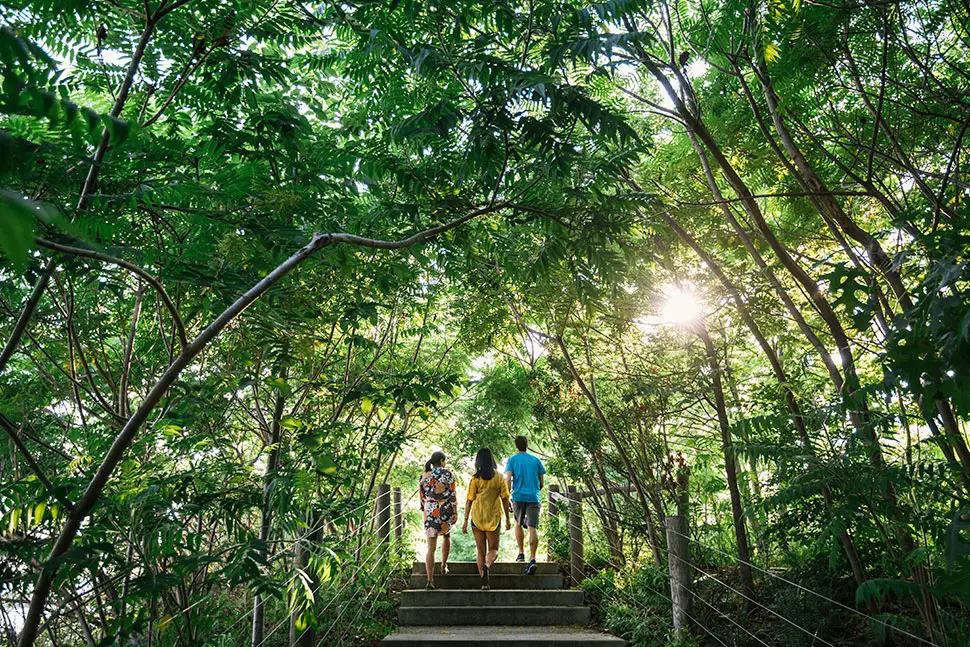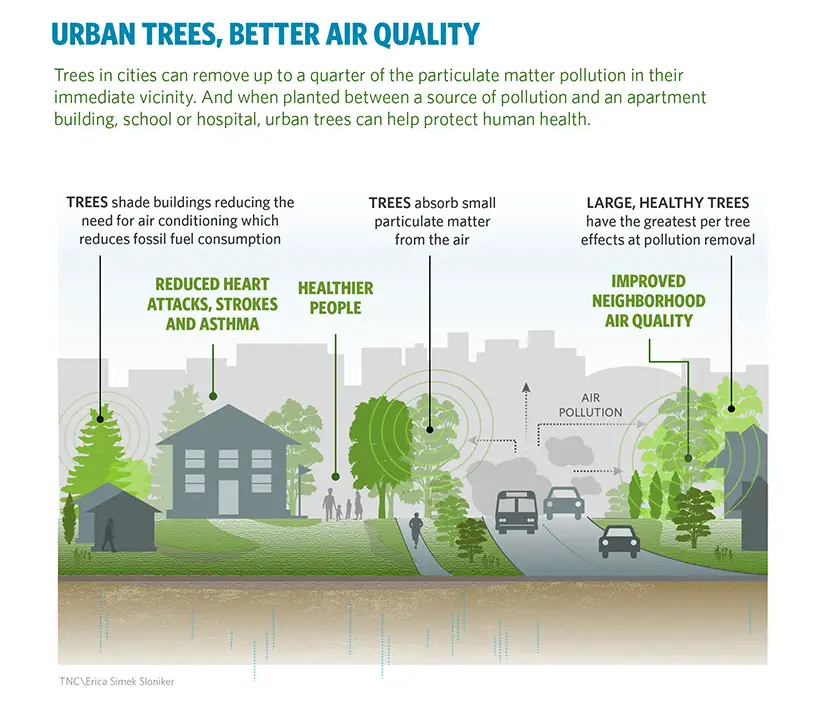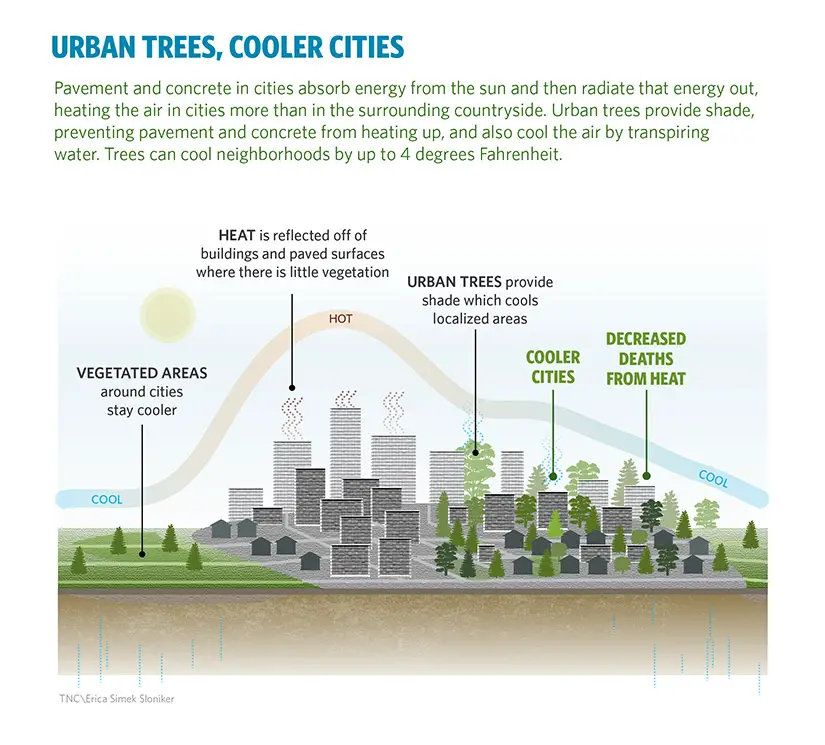
1st November 2016 Urban trees can improve millions of lives by reducing air pollution and temperature, says report A global investment of just $100 million in tree planting annually could provide 77 million people with cooler cities and 68 million with significant reductions in particulate matter pollution. A new study by the Nature Conservancy claims this pollution can be reduced by up to 24% near trees, while the local cooling effect is up to 2°C (3.6°F).
Investment in tree planting of just $4 per resident in some of the world’s largest cities could improve the health of tens of millions of people by reducing air pollution and cooling city streets. The Nature Conservancy's Planting Healthy Air study, released at the American Public Health Association (APHA) annual meeting, applies well-established research into how trees clean and cool the air locally, looking instead on a global scale to identify places where tree planting can make the biggest impact. The Conservancy partnered with the C40 Cities Climate Leadership group to develop the study, with the aim of providing urban leaders with the data they need to demonstrate that investments in tree planting can improve public health in their cities. “Trees can have a significant local impact on pollution levels and temperatures,” said Rob McDonald, lead scientist for global cities at the Nature Conservancy and the study’s primary author. “Urban trees can save lives, and are just as cost-effective as more traditional solutions like putting scrubbers on smokestacks or painting roofs white.”
The challenges facing cities are significant, but trees can be an important part of the solution:
The Conservancy’s Planting Healthy Air study found that an annual global investment of US$100 million in tree planting could provide 77 million people with cooler cities and 68 million people with measurable reductions in particulate matter pollution. Cities with high population density, high pollution and heat levels, and low cost of tree planting showed the highest return on investment, with nations like India, Pakistan and Bangladesh topping the global rankings. But the data also shows neighbourhoods in every city that offer a high potential benefit to residents from tree planting. Trees are the only solution that both clean and cool the air, while simultaneously offering other benefits, including urban green space for residents, habitat for wildlife and carbon sequestration. Tree planting is a solution that mayors and other municipal leaders around the globe can implement to improve the lives of residents within their communities, reducing air pollution and slowing climate change. “Trees alone cannot solve all of the world’s urban air and heat challenges – but they’re an important piece of the solution. In this urban century when there are going to be an extra two billion people living in cities, smart cities should be thinking about how nature and trees can be part of the solution to keep air healthy," explained McDonald. "One of our goals outlined in the report is to remind cities that you have the parks or urban forestry department on one side, and the health department on the other side. On this issue at least, they need to be talking to each other. I am really hopeful that if more cities start thinking that way, then we will see a rebirth in urban tree planting."
---
Comments »
|










